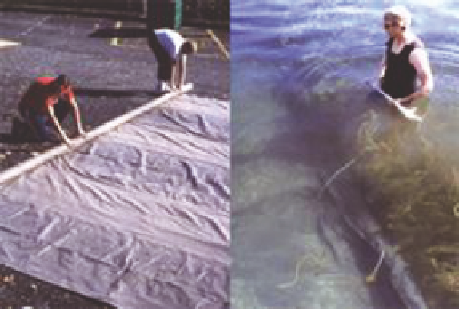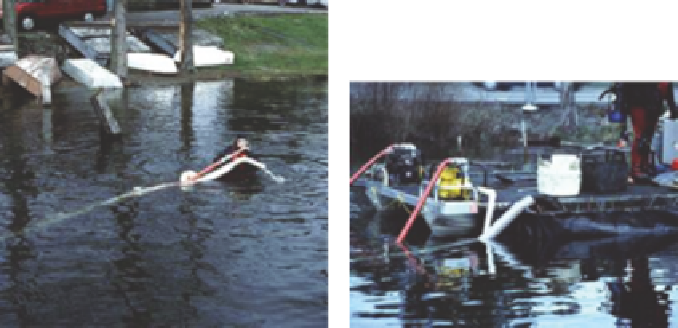Environmental Engineering Reference
In-Depth Information
FIGURE 17.8
Benthic barrier. (From ERDC, Bottom barriers, USACE Environmental Research and
Development Center, Noxious and Nuisance Plant Management Information System, 2005. Available at http://
el.erdc.usace.army.mil/pmis/MechanicalControls/MechanicalControlInfo.aspx?mechID=2.)
•
Some bottom screens are dificult to anchor on deep muck sediments.
•
Bottom screens interfere with ish spawning and bottom-dwelling animals.
•
Without regular maintenance, aquatic plants may quickly colonize the bottom screen.
17.5.3 d
redGInG
Dredging is most commonly used to restore lakes that have been illed in with sediments, to deepen
them, to remove sediment nutrients and organics, and for purposes other than aquatic plant man-
agement. However, dredging may be effective for restructuring a lake or deepening it to reduce the
littoral zone and hence reduce plant growth.
An additional beneit to dredging is the physical removal of the aquatic plants, including roots,
tubers, and turions (buds along the leafy stem) that are found in or settle to the bottom of a lake and
start new plants. In some cases, the removal of all plant parts, surfaces, and subsurfaces via dredg-
ing may be the only feasible alternative to controlling noxious plants.
An example of effective targeted dredging is diver dredging, where a diver uses a suction or a pump
system to physically remove plants, both surface and subsurface portions, such as hydrilla (Figure 17.9).
This method is most effective for removing pioneering infestations of submersed invasive plant species.
FIGURE 17.9
Diver-assisted dredging. (From ERDC, Diver dredge, USACE Environmental Research and
Development Center, Noxious and Nuisance Plant Management Information System, 2005. Available at http://
el.erdc.usace.army.mil/pmis/MechanicalControls/MechanicalControlInfo.aspx?mechID=2.)


Search WWH ::

Custom Search